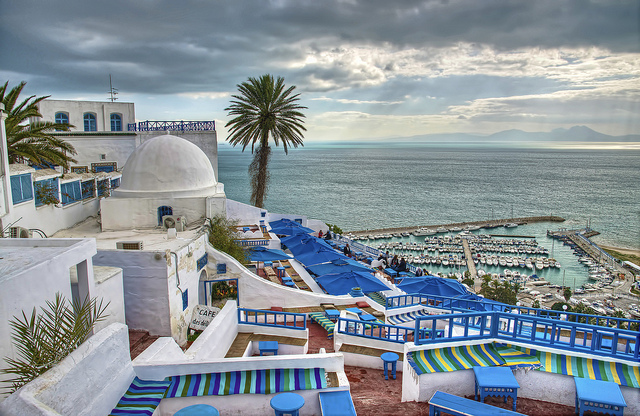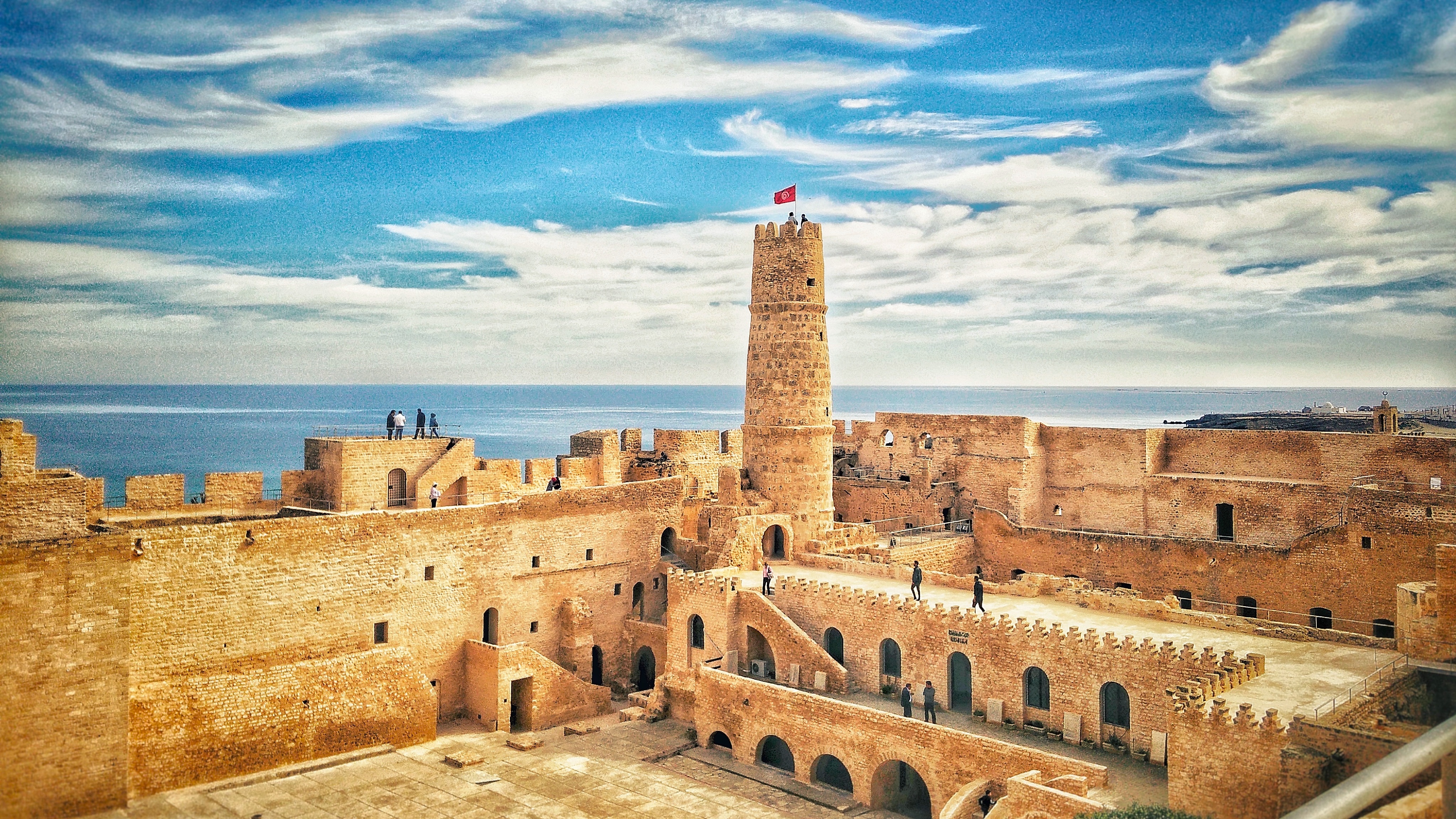With its breathtaking landscapes and rich cultural heritage, Tunisia’s natural beauty captivates the imagination. The country boasts a diverse tapestry of landscapes, including fertile plains, rugged mountains, and verdant oases. Ancient cities like Tunis and Carthage showcase a harmonious blend of Islamic, Roman, and Berber architectural influences, with intricate details and vibrant colors that adorn the streets and buildings.
The Medinas, with their labyrinthine alleys and bustling souks, offer a sensory delight, with the aroma of spices, the vibrant textiles, and the melodic sounds of local vendors. Whether exploring the ancient ruins of Dougga or wandering through the quaint village of Sidi Bou Said, Tunisia’s picturesque charm never fails to leave a lasting impression on visitors.
Roman Ruins of Dougga
Dougga is a small town in north Tunisia that holds the extensive ruins of a Roman town, is set on a hilltop, overlooks surrounding valleys with olive plantations, and is featured on the UNESCO World Heritage List. It also has several other monuments dating from pre-Roman times. The best time to visit Dougga is in the fall or spring. The actual site is located inland, so during the summer months, it gets very hot.
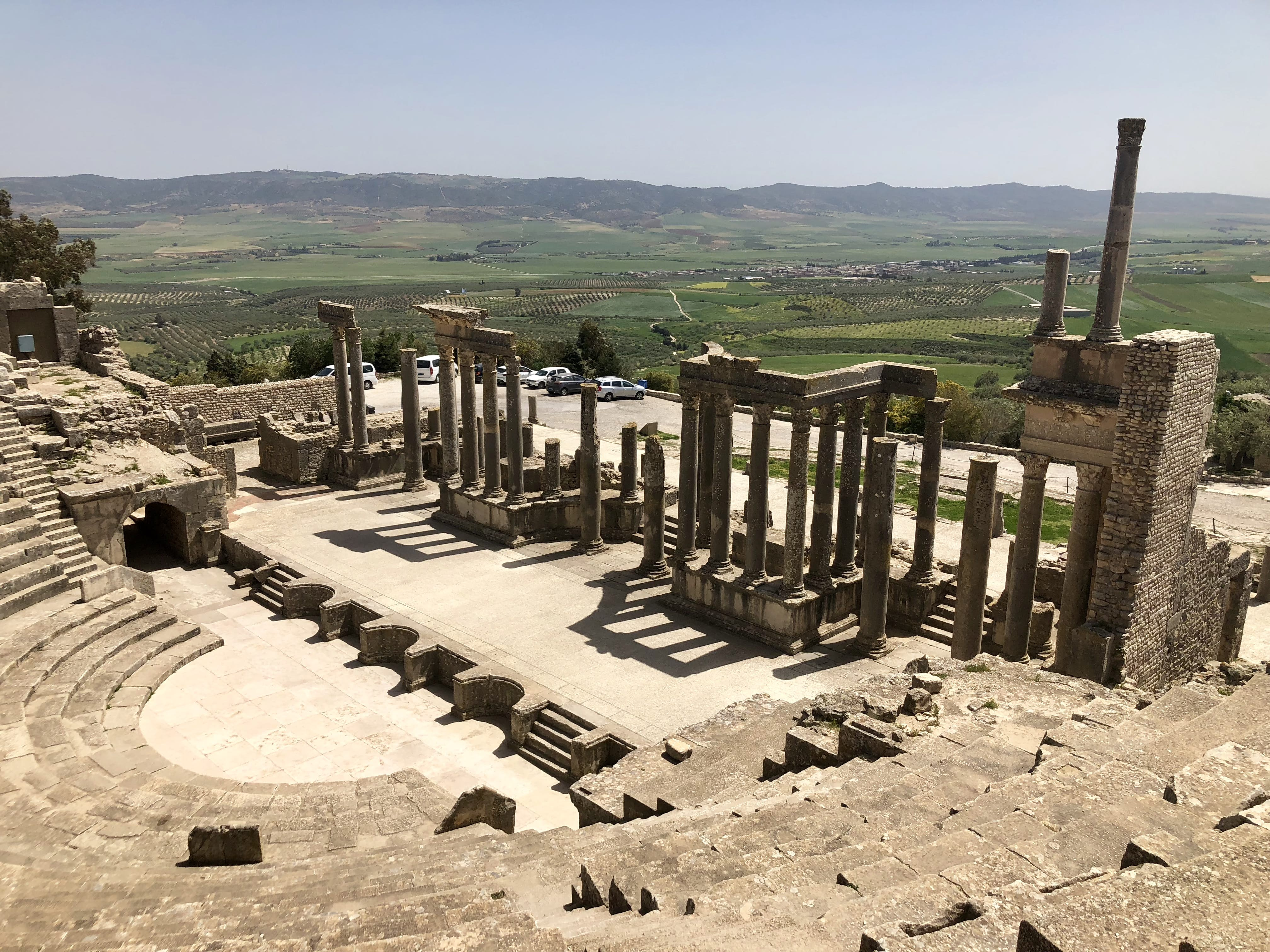
Djebel Ressas
Djebel Ressas is a high and rugged outcropping of Jurassic limestone situated on the horizon southeast of Tunis. The geologic origins of Djebel Ressas and the neighboring peaks date to earlier than 100 million years ago. The surrounding region was then a vast and swampy tropical area abundant with life.

Takrouna
On the side of a 200-meter hill, the Berber village of Takrouna offers a breathtaking view of the tapestry of colors and scenery that surrounds it. From the top of the village, visitors can admire the panoramic view of the Gulf of Hammamet and Sousse and look over the vast groves of olive trees that cover the landscape of the Kairouan and Zaghouan regions.

Antonine Baths
As the largest set of Roman thermea built on the African continent and one of the three largest built in the Roman Empire, the Antonine Baths were a huge Roman bath complex in ancient Carthage, Tunisia. The baths were destroyed by the Vandals in 439 AD, then the stone was reused by the Arabs during the construction of Tunis. Today, the ruins are relatively well preserved, and it is easy to imagine the thriving landscape.
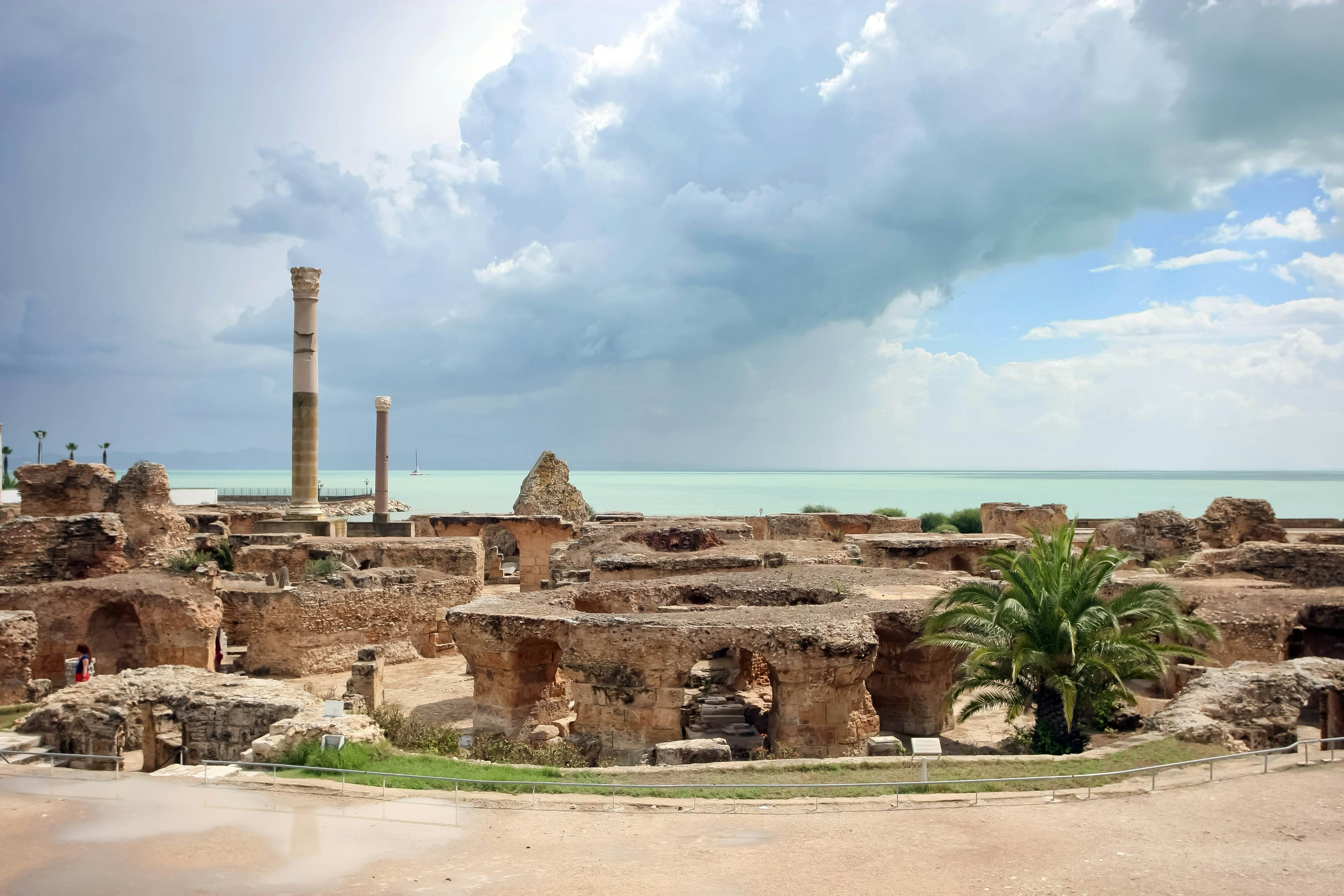
Tamerza
Tamerza is a large mountain oasis in Tunisia that is an outdoor wonderland for those who enjoy hiking and rock climbing. Tamerza is home to an old town filled with traditional architecture, two waterfalls, and plenty of gorges to hike and climb.

Sidi Bou Said
Perched on top of a steep cliff and surrounded by breathtaking Mediterranean views, Sidi Bou Said is the perfect antidote to the hustle and bustle of the Tunisian capital and a favored getaway destination for locals and visitors alike. The town’s cobbled streets are lined with art shops, souvenir stalls, and quaint cafés. Brilliant blue-painted doors and trellises contrast beautifully with the pure white of Sidi Bou Said’s Grecian buildings.
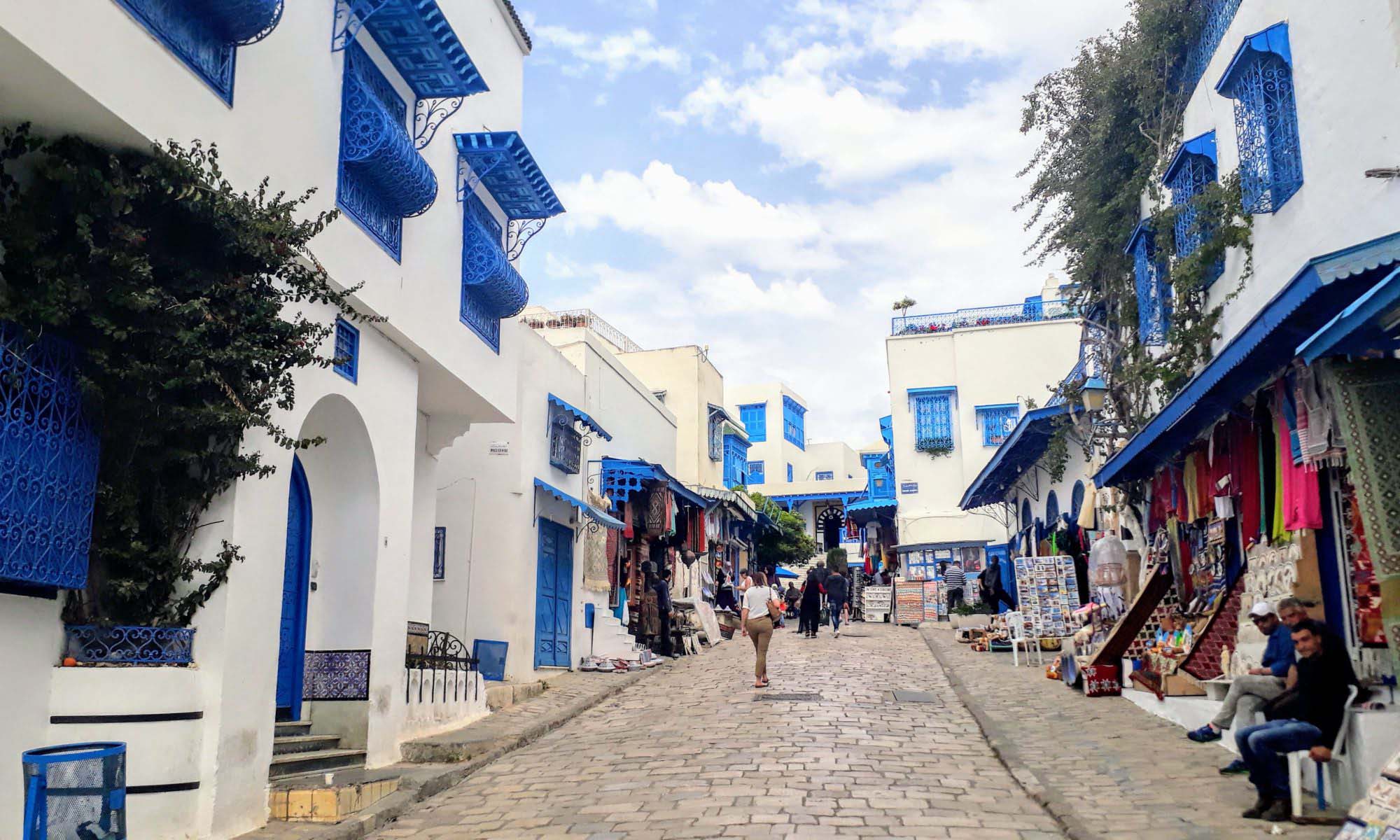
Tunis Lake
The Gulf of Tunis is partially composed of the Tunis Lake, which was formed in the 11th century. Despite being separated from the sea due to sedimentation, the lake is still affected by various external influences. In 1881, French engineers dredged a canal to facilitate the entrance of ships to Tunis harbor, dividing the lake into two sections, the Northern and Southern lakes. Various bird species, including yellow-legged gulls and egrets, rely on the lake for food and shelter during the winter months.
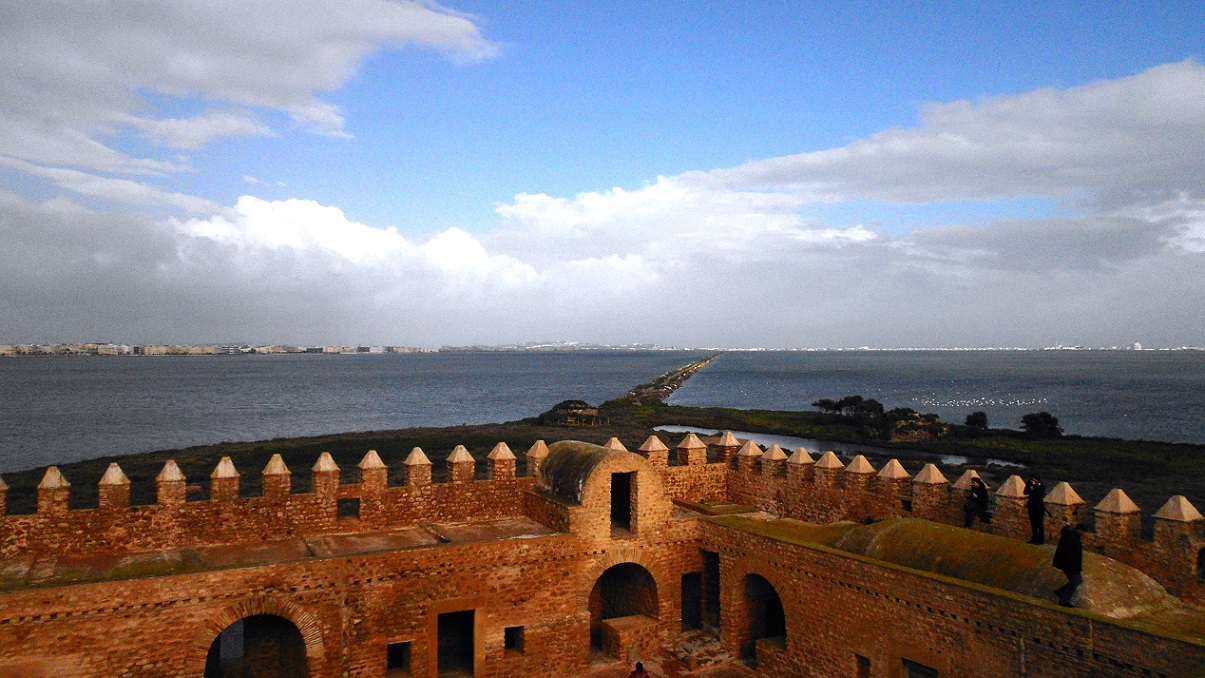
City of Kairouan in Medina
The Medina (old town) of the Tunisian city of Kairouan, which is the fourth-holiest city of Islam, has a multitude of treasures to offer. Winding alleys, numerous mosques, and lively markets form the typical atmosphere of a North African city. Kairouan is located about 150km southwest of the capital Tunis. Until the 11th century, Kairouan was an important center of Islamic learning in North Africa. In 1988, the Medina of Kairouan, its markets, and mosques were declared World Heritage Sites by UNESCO.

Ksar Ouled Soltane
Atop a sandy hill is the oval fortification of Ksar Ouled Soltane. Rounded, protected structures built completely of cracked, dry mud face the center of the castle-like granary, while steep outdoor staircases give the area the appearance of being entirely in another world. Constructed by Berber people, the ghorfas, or stacked grain-holding buildings, have survived the hot climate since the 15th century. George Lucas chose Southern Tunisia for filming four of the six Star Wars films.
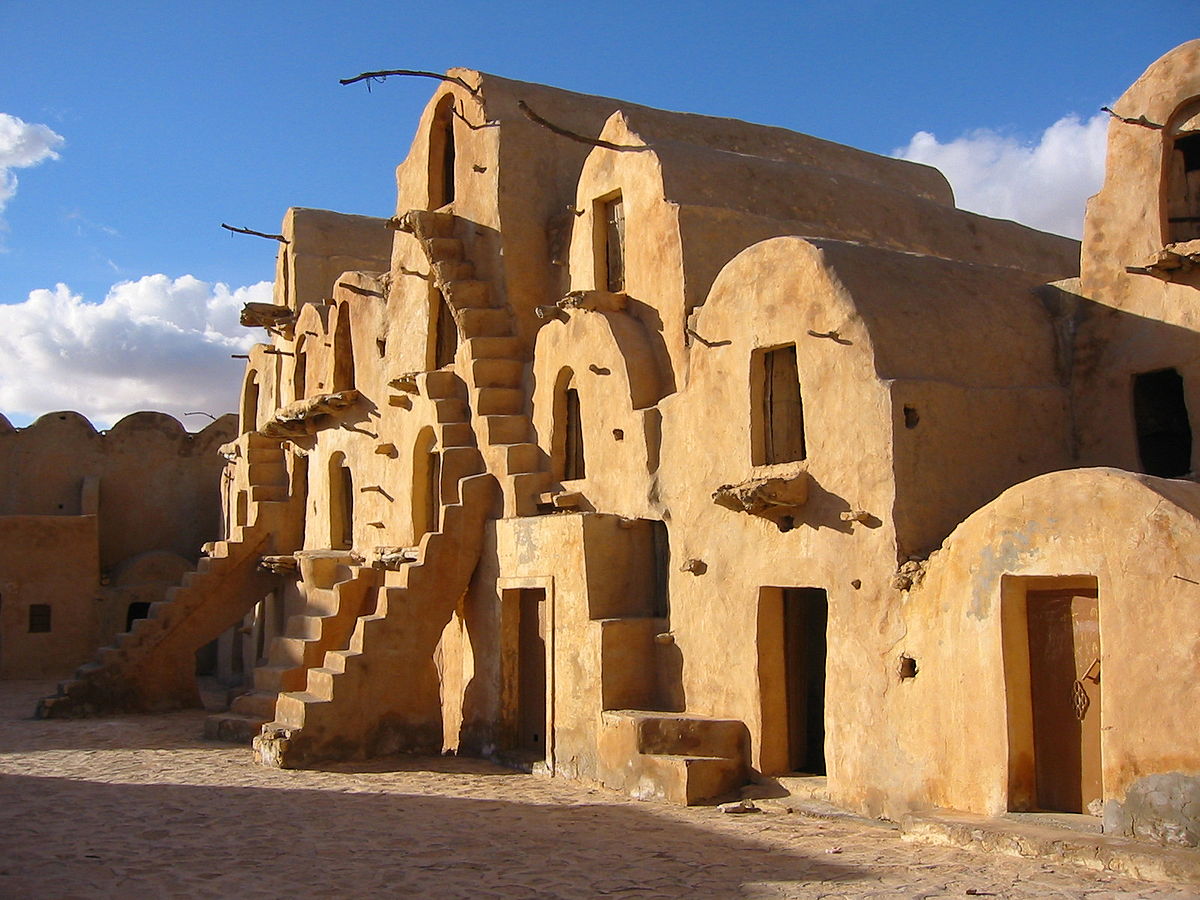
El Djem
The city of El Djem is situated inland from the east coast of Tunisia 60 km south of Sousse. Built on a former Punic settlement, it was one of the main Roman cities of North Africa and was known as Thysdrus, an important center of olive oil manufacture and export. El Djem is most famous for its amphitheater, which was the largest in North Africa, it was constructed between 230 and 238 AD by Marcus Antonius Gordianus Sempronianus, the proconsul of North Africa. Until the 17th century, the amphitheater remained fairly intact, although many of its stones were removed to be used in the construction of the Great Mosque in Kairouan.

Sbeitla
Sbeitla is a small town in north-central Tunisia. Nearby are the Roman and Byzantine ruins of Sufetula, which contain one of the best-preserved Forums in the world. Some inscriptions found in the city suggest that the settlement had success along the lines of others in North Africa during the 2nd century, reaching great prosperity through the olive industry, whose cultivation benefited from excellent climatic conditions in the region.
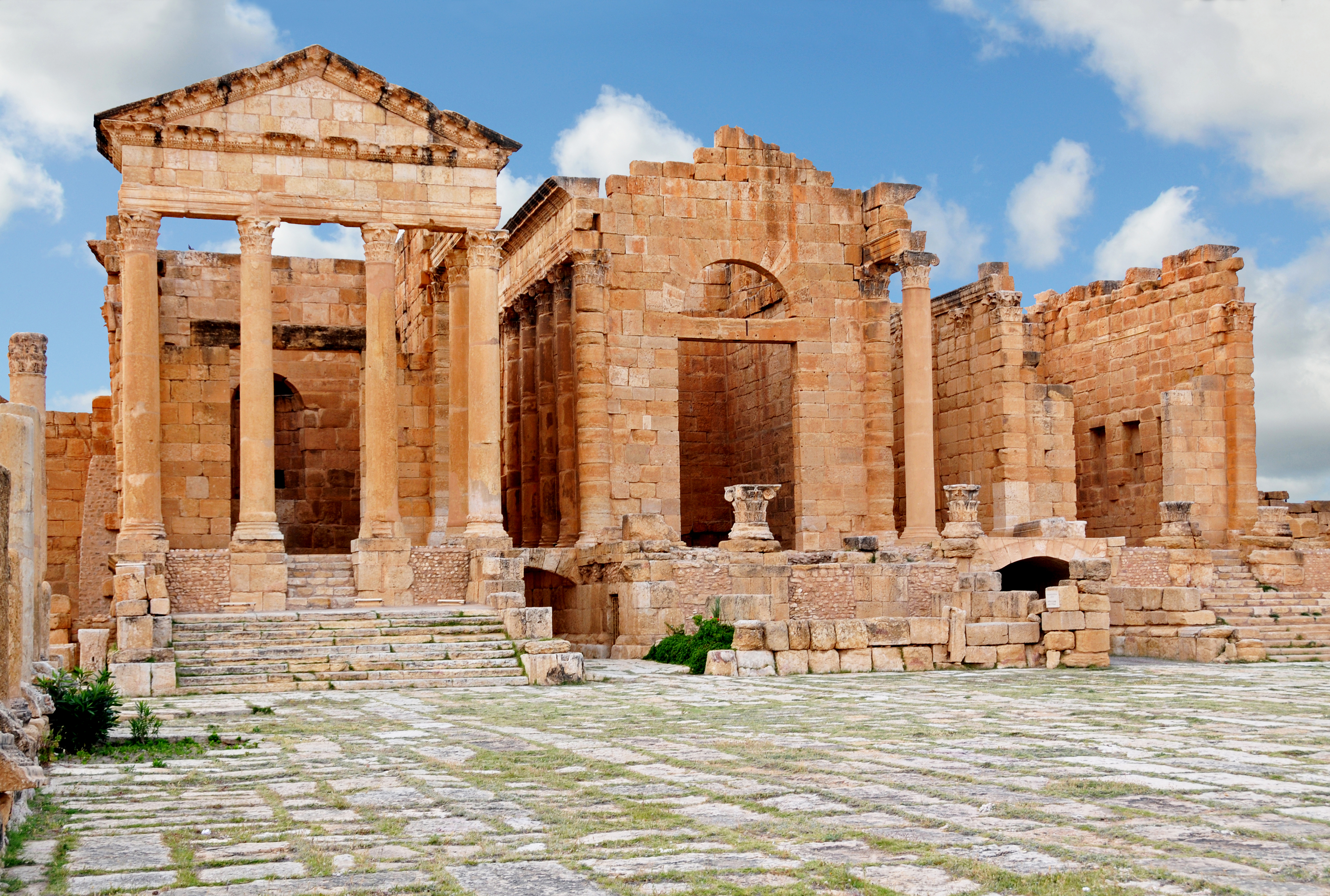
Acropolium of Carthage
Situated on the Byrsa Hill in Carthage, the Acropolium (Saint Louis Cathedral), of Carthage is not only an architectural gem of the colonial era but also an important addition to Tunisia’s contemporary cultural scene. Saint Louis Cathedral, built during the rule of the Beys, is of deep historical and religious significance. In 1830, Hussein Bey II granted permission to the general council of France to build a church on the site of ancient Carthage. The cathedral pays tribute to King Louis IX, who died in Carthage on the way to Jerusalem in 1270 during the eighth crusade.
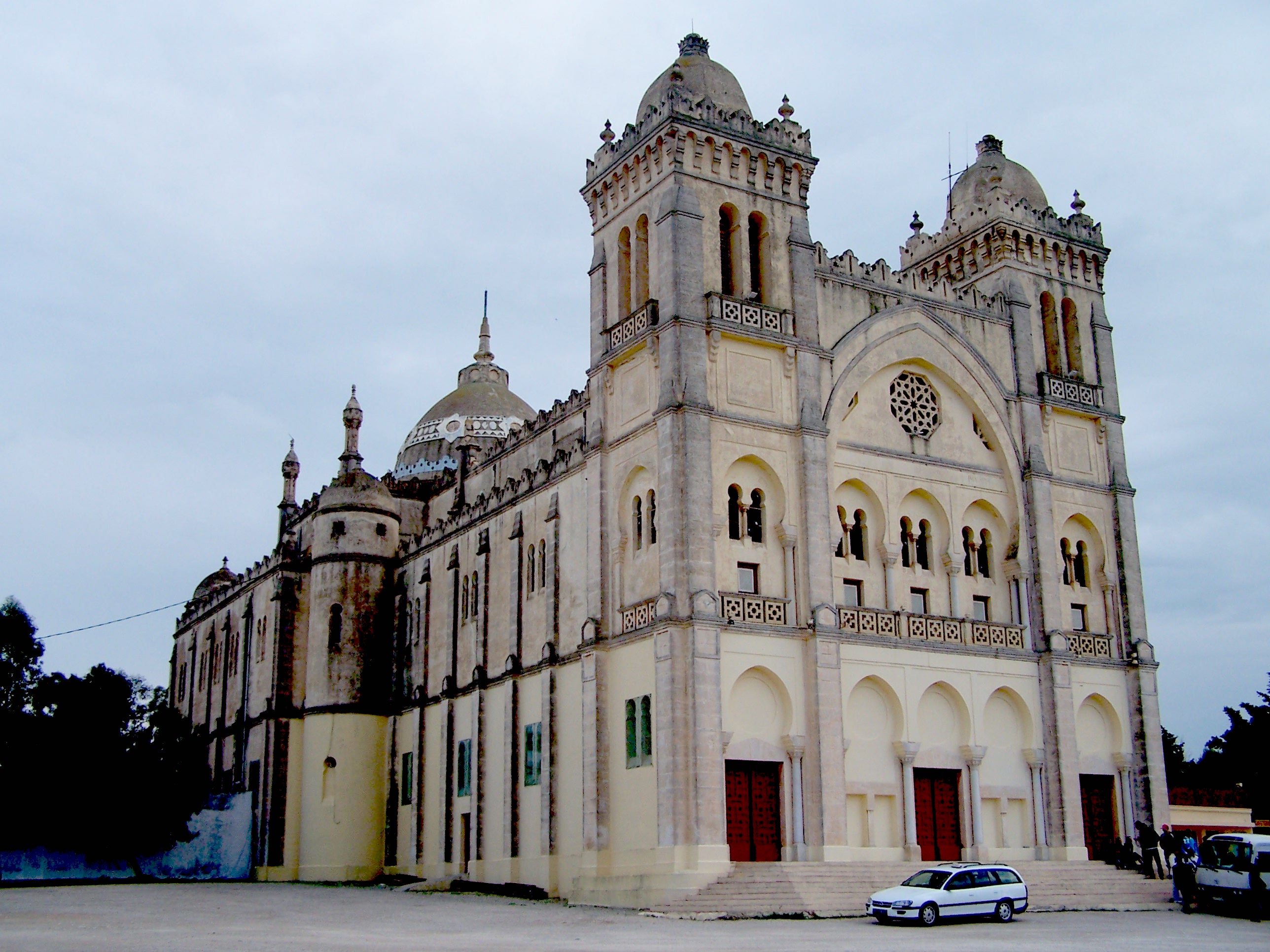
Belvedere Park
The Belvedere Park, a public park located in the center of Tunis, is about 12 hectares and was founded in 1963. There are many types of trees, such as pine, palm, olive, agglutus, and others. It also has a zoo containing a variety of animals and birds from different continents.
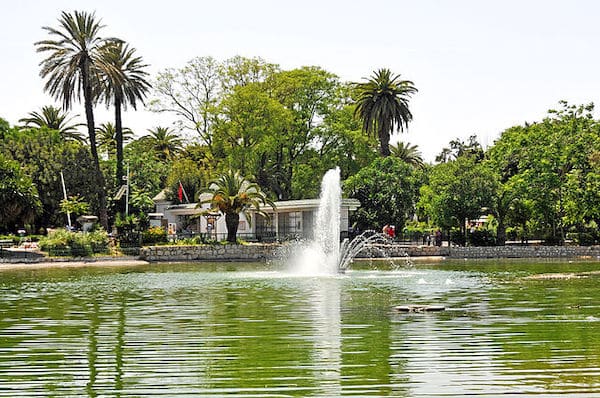
The Ribat of Sousse
The Ribat of Sousse sends the visitors back to the beginning of the Middle Ages, at the time of the rivalry between the Byzantine Empire and the new Muslim Empire. More than eleven centuries ago, a community of Muslim ascetics settled on the shores of Tunisia, not far from the new capital, Kairouan, which was founded a hundred years before. In order to participate in the defense of the coastline, a small fort was constructed for these ascetics so that they could watch out for Byzantine attacks.
Djerba
Djerba is a small island in south Tunisia with white sandy beaches and whitewashed domed houses. The Djerban people are culturally distinct from mainland Tunisians and preserve many of their traditions and unique architecture. It’s wonderfully interwoven tapestry is most evident in its people, with the Muslim, Berber and Jewish communities peacefully coexisting on the island as they have done for centuries.
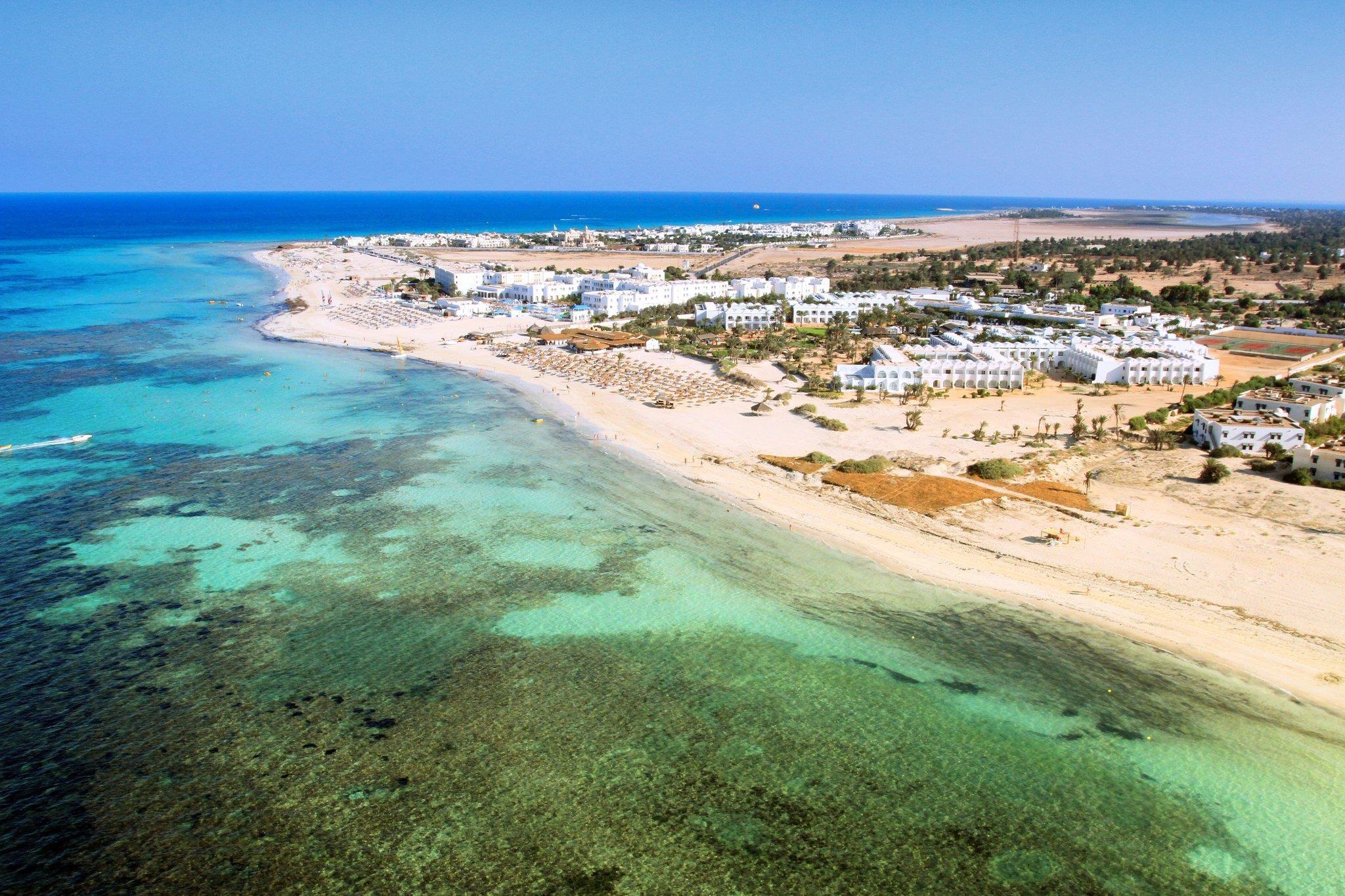
If you’re looking to visit a country with unmatched scenery, you won’t regret adding Tunisia to your travel bucket list, Tunisia’s breathtaking beauty will surely inspire you!
WE SAID THIS: Don’t miss… Unique Experiences To Have On Your Journey Through Jordan


